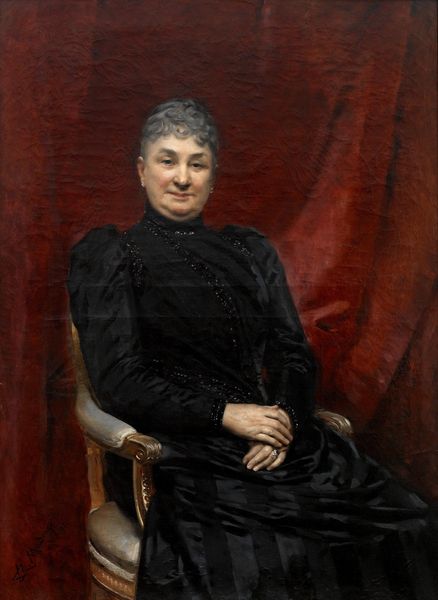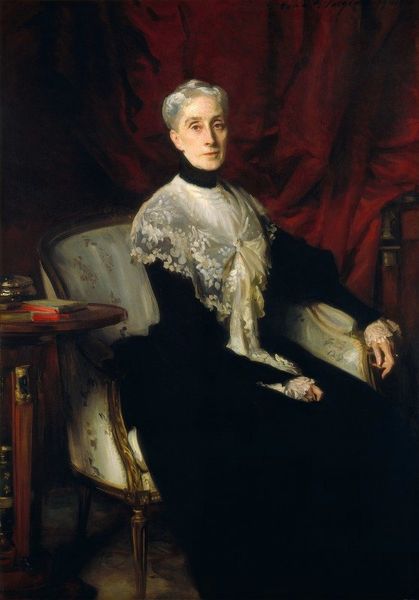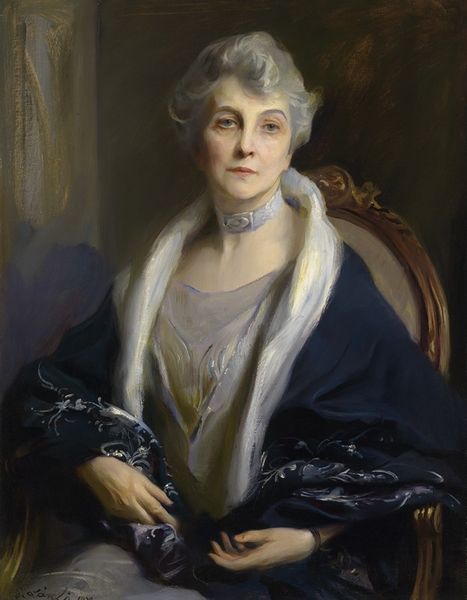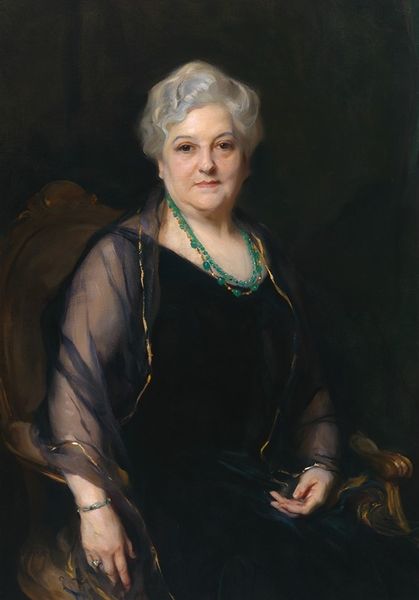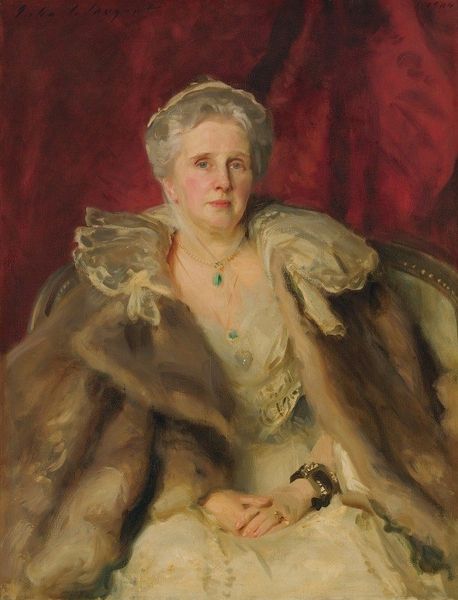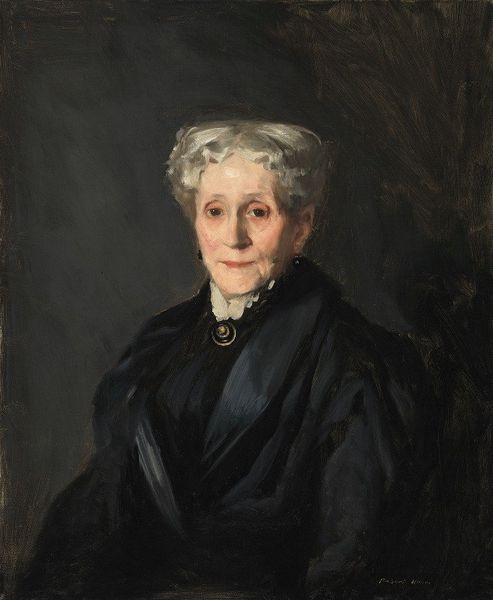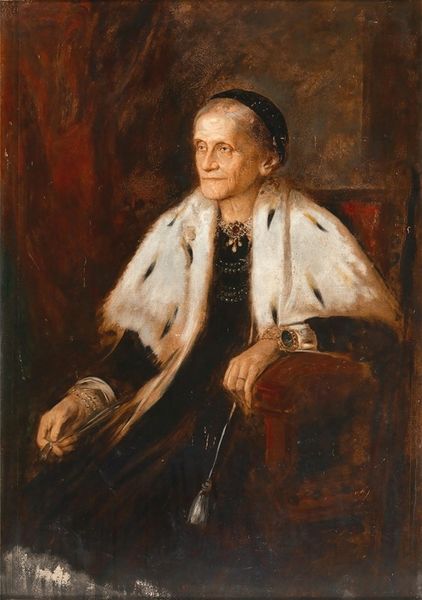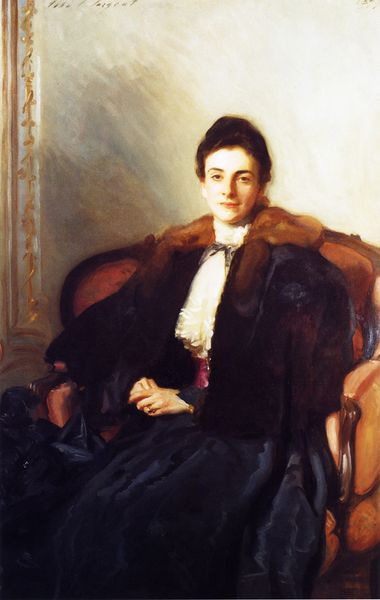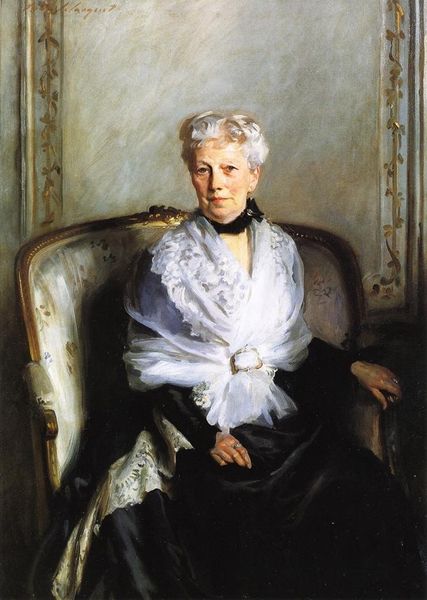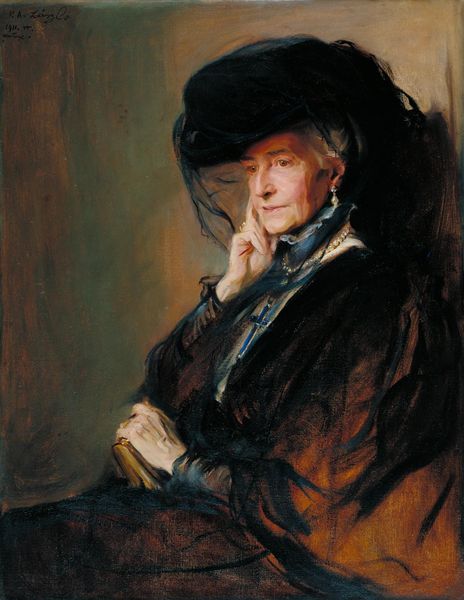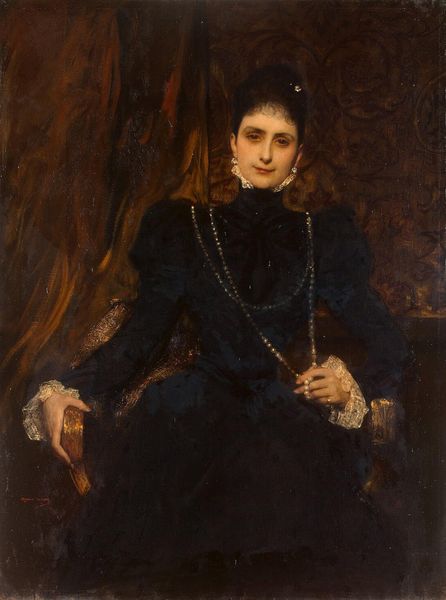
Copyright: Public Domain: Artvee
Curator: Good morning. We’re standing before Léon Bonnat’s "Portrait de Madame Dubernet," painted in 1899. It's an oil on canvas work, showcasing a seated woman in formal attire. Editor: My initial reaction is one of muted opulence. There’s a quiet solemnity, even in the rich textures and colours. The deep purples and browns are quite grounding. Curator: Grounding, yes, and deliberately so, I think. Consider the academic tradition Bonnat was working within, a system obsessed with realism, but also social commentary. Notice the materiality, the weight of the fur stole. This isn't simply adornment; it's a clear indicator of Madame Dubernet’s social standing and the economic realities of her time. How the material of that stole was made reflects the societal and labor constructs of the time. Editor: Precisely! But the symbolism goes further. Fur, in portraits, has historically signified status and worldliness but also animalistic strength tamed and displayed. Her rings and lace add layers of refined respectability. It says that there are power dynamics but those have been carefully controlled for presentation to society, according to the customs of the period. Curator: And the painting itself as an object is meant to reflect the same controlled setting, right? I see the tension between its materiality and that very stiff presentation and formality that was intended as her dignity and her husband's wealth. We see Bonnat demonstrating his labor but Madame Dubernet demonstrates the fruit of their labor. Editor: Exactly. And consider her expression – composed, slightly aloof. There's a reserve there. It reinforces that calculated performance that you’re alluding to with this society portrait: every element signifies meaning carefully constructed. Curator: Absolutely, down to the artist's brushstrokes! What message could be constructed with broad brushstrokes, versus sharp lines. I find it fascinating how the very *making* of the image aligns with societal and political context during that period. What statement of her stature, and the means she obtained that stature. Editor: A powerful, albeit muted, reflection on class, control, and the power of symbols within society. Curator: Precisely, the artist demonstrates his power with this family commission and how those symbols affect us today.
Comments
No comments
Be the first to comment and join the conversation on the ultimate creative platform.
